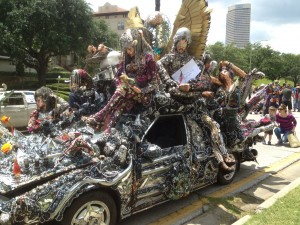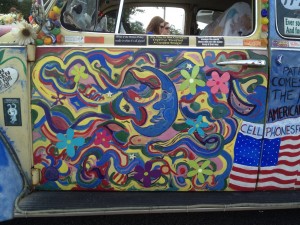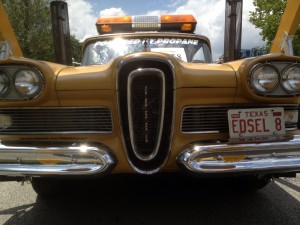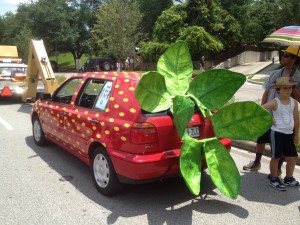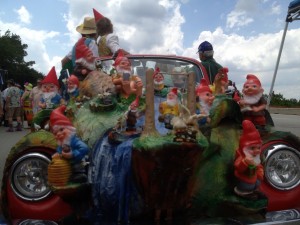This is a red-letter news day: Old people are living better, a very old scroll is faring better, and moss hidden under the ice for centuries is sprouting new growth for the better. Wrinkle your nose like Bugs Bunny and shout, “What’s up, Doc.” Good news may be on the rebound – three articles in one news day is a cause of guarded celebration.
Gopher alert!! Minnesota wins!! United Health Foundation, a non-profit group, ranked each U.S. state’s performance in providing a healthy environment for oldsters (folks they defined as “seniors” by being over 65). Minnesota was at the top as the healthiest state for older folk to reside. The Top 10 includes Iowa (my home state), Colorado, Utah, New Hampshire, Vermont, Massachusetts, Connecticut, Maryland and Hawaii. Across the country, those 65-and-over (“Don’t call us ‘old.’”) are the U.S.’s fastest-growing age group. My parents, who are both over 90, live in a gorgeous assisted-living complex on an Indian reservation south of Minneapolis, Minnesota. Go, Mom and Dad — that’s the way to stay healthy in a healthy state for seniors!! Back to the report, the study found that half of our oldsters have multiple chronic health conditions, including: over-weight (25%), physical inactivity (30% — “Hard to be too active when you’re pushing the century mark in a wheel chair.”), and arthritis/immobility (52% — “You live that long, what’s wrong with letting someone else do the pushing – my knees do ache?”). Although these can be serious conditions, in some ways, they don’t bother me as much as other things, because they seem in a way the natural concomitants of aging and being allowed to kick-back and enjoy visits from the grandkids, great grandkids and great-great grandkids. (“Whew, that’s a lot of kids to be grand about – no wonder we feel a little tired.”) What bothers me is this statistic: 14% of our seniors are hungry. This makes me sad and angry. I don’t understand why in the United States of America in 2013 anyone over 65 should go to bed hungry. I believe age should be respected, and those who have worked their lives for others should be cared for. Yes, the costs will go up. Medicare spending will be about $500 Billion in 2013; and it will double to about $1 Trillion in 2013. Nevertheless, I feel, in my heart, that our oldsters are worth every penny of it – they’ve given more to us than we can every give back to them. As we leave no child behind, no senior should be left behind. And, not one should go to bed hungry. Sorry, I’ll get off my soap box. One final story: When my Grandma Ethyl was in the nursing home years ago, she looked over at a much younger version of me and asked: “Why am I here? I can’t chew. I can hardly see – mostly shadows. You have to shout for me to hear you. Why am I here?” I looked at that dear woman and said what came into my mouth: “You’re here for me, Grandma. You’re here for me.”
Scrolls can last longer than people. In the far past, it was traditional to hand letter the first five books of the Bible, referred to as the Pentateuch, onto long sheets of animal skin or parchment, put a wood or metal rolling pin at each end — so the handles stick out, and roll the ends around the pins and toward each other, forming two fat rolls when they met. That’s a scroll – a script that’s rolled from both ends to meet in the middle. When it’s a scroll of the Pentateuch, it’s called a Torah scroll. You unroll the scroll to find your place – and, that can be a challenge. Books with pages are much easier, but the scroll was an earlier invention. The scroll that was recently re-discovered in the University of Bologna library in Bologna, Italy, is a sheepskin document 40 yards long and 25 inches wide. The library thought it was rolled around 1650 AD. An expert has tested and documented the correct age to be about 1200 AD, some 450 years older than expected. As such, it is the oldest know complete Torah scroll. As a wise man is suggested to have once said: “If you last long enough, you may be kinda’ important.” Well said. I like the quote in the paper about the scroll, which sums things up nicely: “It is fairly big news . . . scholars get excited by very small things.” And, very old things — you gotta’ love those scholars, whatever their age.
And, to continue our old news from the news day: “Mosses buried under the ice for 500 years sprout again!” Back in the so-called Little Ice Age, between 1550 AD and 1850 AD, global temperatures dropped (“So much for global warming, huh?” – “Don’t know.”), and the Canadian glaciers advanced — covering, blackening and discoloring the poor little mosses in their paths. Now, temperatures are rising again (“Global warming, right?” – “Don’t know, temperatures seem to go up and down, but they seem to have always done that.”), and now the glaciers are retreating — leaving the poor frozen squished and squashed moss remains behind. But, “Wait,” the researchers at the lab in the University of Edmonton, Canada, shout to each other, “Look, there, that smashed little moss on the lab bench is branching out green and its stems they are a-buddin’.” And, it was true. The dead plants they’d dug were dead no longer. Five hundred years under the freezing ice and still they bloom. That’s a hardy bryophyte, and a worthy comment on the will to live and the value of life — however old they may be. Keep growing moss! You’re our kind of plant.
And, there you have it: Three uplifting stories from the good news of the day. Oldsters are doing better, old books (scrolls) are being read, and dead moss is alive again. The message to me is clear: visit a senior friend or relative today, pick up a book or scroll for the nightstand, and never underestimate a green plant – they’re our friends too. The news does not get better than this: a wise relative, a good read, and something green. And, all in one day.
My heart is lightened.
Cheers,
Grandpa Jim




